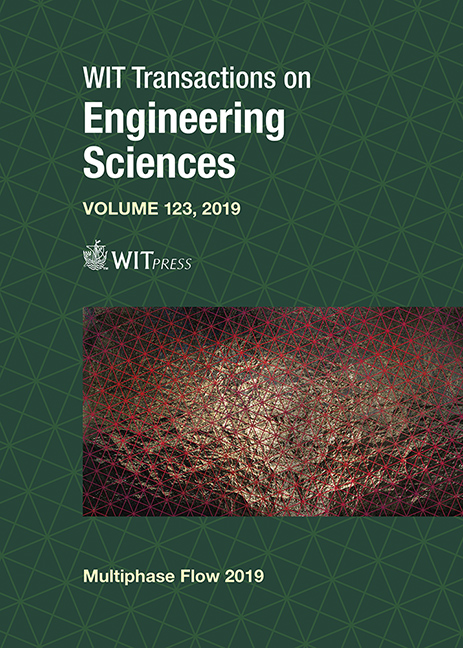MASS TRANSFER THROUGH FREE SURFACE BOUNDARY LAYERS USING A STATISTICAL APPROACH
Price
Free (open access)
Transaction
Volume
123
Pages
12
Page Range
77 - 88
Published
2019
Size
447 kb
Paper DOI
10.2495/MPF190081
Copyright
WIT Press
Author(s)
FRANCISCO ANTONIO LOYOLA LAVIN, HARRY EDMAR SCHULZ
Abstract
Mass exchange through gas–liquid interfaces, whose liquid side has a turbulent nature, are still difficult to quantify due to the unclosed set of turbulence equations, which are also nonlinear. This paper describes an efficient method to overcome this difficulty, by substituting the statistical variables of the original equations by statistical relationships furnished by the Random Square Waves (RSW) tool. Oscillatory records are simplified using random square waves (ideal and binary), which allow a theoretical statistical treatment of the signals. This tool was applied to the concentration boundary layer at the gas–liquid interface. Normalized mass fluxes and mean concentration profiles were obtained using Taylor-series-based solutions, which allow for consideration of transient situations through the successive calculation of the higher order coefficients (derivatives). Comparisons with experimental data available in open literature are presented as a first evaluation of the Taylor series, showing promising results. This method is a viable tool, and this study shows novel conclusions that reproduce general tendencies observed in one-dimensional mass transfer phenomena in boundary layers.
Keywords
turbulent mass flux, concentration profile, gas–liquid interfaces, RSW, turbulence statistics





